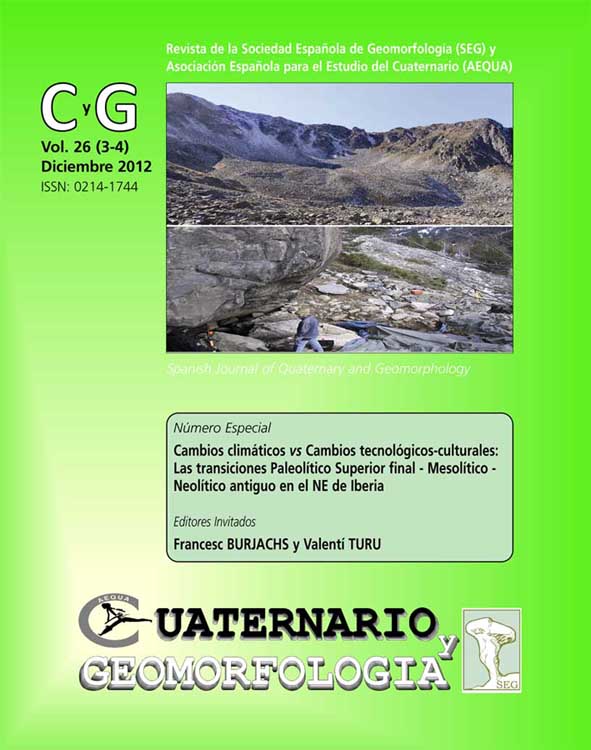Settlement, Exploitation and Environment of the Alpine and Subalpine Niches in the Central Pyrenees during the First Half of the Holocene
Keywords:
Holocene, Neolithic, landscape archaeology, palynology, carpology, PyreneesAbstract
This paper presents the results of the studies undergo at the Cova del Sardo and Abric de l’Estany de la Coveta I, two archaeological sites placed in the National Park of Aigüestortes and Estany de Sant Maurici. Both sites have been object of multiproxy analyses inside a long‐term research program in archaeology that promotes surface surveys and excavations in the head of Noguera Pallaresa and Noguera Ribagorçana basins, in the Central Southern Pyrenees. The studies shown different variables that suggest an anthropogenic impact on the vegetation during the first half of the Neolithic occupation at Cova del Sardo, that took place during the Holocene Climatic Optimum. The presence of cereals seeds in two Neolithic phases suggests the possibility of some kind of local agriculture, although this hasn’t been confirmed by pollen studies. Probably livestock it was the main economic activity in this site. In latter Neolithic phases at Cova del Sardo a recovery of a closed forest can be seen, while there is a climatic deterioration. Paradoxically, at this moment the occupation and exploitation pattern turns to a major emphasis towards the alpine pastures, with little camps around the lakes and glacial cirques just at the beginning of secondary basins. The palaeoecological study of archaeological contexts is very helpful to understand the local phenomena of environmental impact because of economic activities.Downloads
Download data is not yet available.
Downloads
Additional Files
Published
2012-12-21


